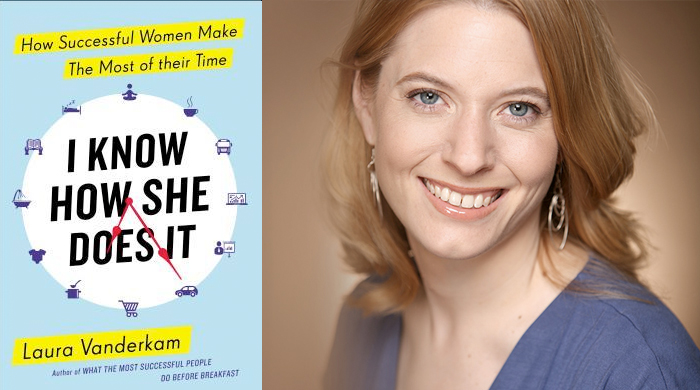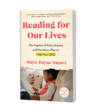I was reading Laura Vanderkam’s “I Know How She Does It” when news broke of the racist killing of nine churchgoers in South Carolina. At first, it felt meaningless to be mining the book for time-saving strategies and productivity tips as the nation (or some of it anyway) went into mourning. It felt absurd to read a self-help book when I could be toppling confederate monuments or lobbying for gun control.
Yet I kept turning the pages. And I realized that in the face of senseless violence, I was comforted by Vanderkam’s assertion that we have plenty of time to do the things that matter to us. Even toppling monuments to oppression or lobbying for change.
We have the time — we just don’t recognize or appreciate it, she argues. “The math is straightforward,” she writes to her audience of women juggling careers and families.
“There are 168 hours in a week. If you work 50, and sleep 8 per night (56 hours per week in total), that leaves 62 hours for other things. If you work 60 hours and sleep 8 hours per night, that leaves 52 hours for other things.”
And truly, very few people work more than 60 hours a week, according to Vanderkam’s research, despite the stories they tell.
She conducted a study, The Mosaic Project, that asked participants to: “Write down what you’re doing, as often as you remember, in as much detail as you wish to share.” Participants used spreadsheets broken into 15- or 30-minute increments or apps, like Toggl, to keep track.
Though time tracking isn’t perfect, it’s a vast improvement over just asking people how they spend their time, which is what much research does. People get this wrong in a variety of ways. Without conscientiously logging hours, they are just guessing. And they are guessing under the influence of systematic bias.
“If everyone in your industry talks about their eighty-hour workweeks, even if logs show they’re probably averaging fifty-five hours, you will talk about your eighty-hour workweeks too,” Vanderkam writes. “In a world where we complain about how busy we are, we’re not going to mention that five out of seven nights per week we sleep just fine. It’s the night that a kid woke up at two a.m. and you had to catch a seven a.m. flight that you talk about at parties or mention in your departure memo.”
Our challenge then is to “arrange the tiles” of our career, family and other interests into mosaics of activity that are uniquely our own, versus trying to wedge ourselves into tired narratives of what life should look like. Happy marriages, quality time with children, a social life and (gasp) sleep are all possible, Vanderkam asserts.
There’s time for reading, reflection and activism, too, I thought.
Each chapter of the book features spreadsheets showing how a real woman accounted for the 168 hours in her week. Often, the women found that they slept more and worked less than they thought. And, notably, they managed their lives not with dramatic sacrifices but with basic choice making.
Can’t make it home for dinner with the family every night? So what, make breakfast your time to bond. Want to make some big moves in your career? Take it easy on the housework. It’s not the decisions themselves so much as the grief we give ourselves about not meeting unrealistic standards in every area of our lives every day that gets us down, Vanderkam suggests.
Hearing the voices (and seeing the schedules) of numerous real women with real children working real jobs is instructive—and often humorous. The time logs contain gems like “Kids in bed w/o bath and only 1 brushed teeth as both were stoned on sugar.” We can see ourselves in each of the women and be reminded to take the good with the stressful and keep it moving.
One quibble with the book is that it wasn’t ambitious enough. It argues that we have time for work and family, but I wish it had gone a step further to describe the kind of impact our work can have when we commit to it. At times “I Know How She Does It” feels like a book about navigating snow days and flexible work schedules, when women are desperate for a book about thriving and making a difference. I found myself craving some anecdotes about the powerful organizations and life-saving technologies moms are developing while their kids sleep and play.
Still, Vanderkam brings a welcome pragmatism and optimism to discussions of work-family conflict. “If you believe, like I do, that the good life can be a full life—a level full life or even a heaping full life—then I invite you to study how you place the tiles of your time, energy, and attention,” she writes. “I invite you to think about the pattern with the goal, over time, of making an even more satisfying picture.”
“I Know How She Does It” arrived at the right time for me. I’ve recently relocated to a new city and, without a full schedule or longstanding commitments, I have great flexibility to shape my days. I’ve spent most of my time on unpacking and household concerns, but a more satisfying picture would show considerable time spent on the literacy and advocacy work I find meaningful.
Laura, thanks for the reminder that I’ve got 168 hours to invest this week. Plenty of time to get to work.
I recommend Lisa Bloom’s “Think: Straight Talk for Women to Stay Smart in a Dumbed-down World” as a complement to “I Know How She Does It.” In “Think,” Bloom makes a smart and forceful argument for women to get our heads out of the dust bins and into engaged citizenry.
“Our country, still the world’s only superpower, has the power to bomb or to heal,” she writes. “Which would you prefer? Will you participate in that decision? And politics aside, each of us is an individual superpower, blessed as we are with a first world education, the ability to pick up a book and read it, the freedom to click around for real news online, the means to write a $20 check that will send an Ethiopian girl to school for a year.”
Together the two books give you a reason to be bold about how you invest your time and the practical tools and examples to get on with it.


